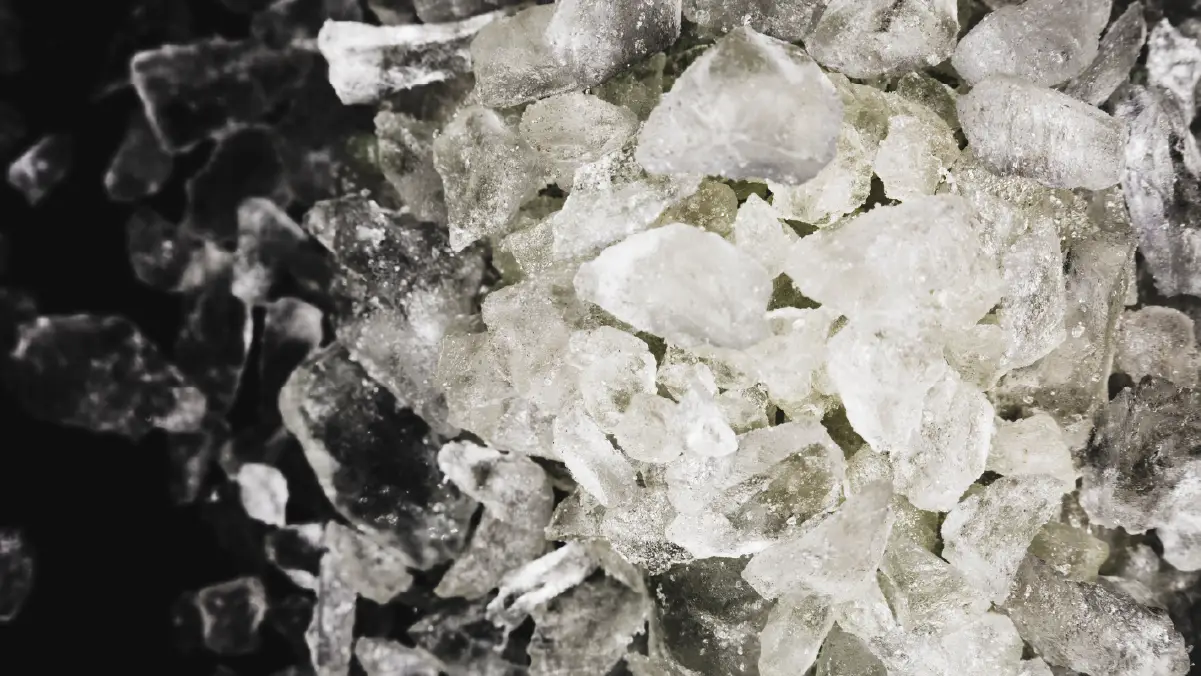
Methamphetamines, commonly known as meth or crystal meth, are highly stimulant drugs that affect the central nervous system. Meth belongs to the amphetamine class of psychoactive substances and is a highly addictive drug. Meth is typically found in the form of a white, odorless crystalline powder. It can be ingested orally, snorted, smoked, or injected.
Historically, methamphetamine was prescribed for medical purposes such as the treatment of obesity, attention deficit hyperactivity disorder (ADHD), and narcolepsy. However, due to its high potential for drug abuse and addiction, its medical use is now limited.
Chronic abuse can cause long-term damage to the brain, resulting in memory loss or cognitive impairment. Additionally, the production and distribution of meth contribute to various social and environmental problems, including crime and the destruction of communities affected by drug addiction.
Methamphetamine, commonly known as meth, can be detected in a urine test for a varying duration depending on several factors. Typically, meth stays in the urine for:
For occasional users, methamphetamine can usually be detected in urine for up to 1-4 days after last use. The length of time can differ depending on various factors such as metabolism, hydration levels, and dosage. Occasional users who use meth infrequently or in small amounts often have shorter detection windows compared to regular users.
On the other hand, for regular users, methamphetamine can be detected in urine for a longer period, typically ranging from 3 to 7 days after the last use. Regular use of meth leads to the accumulation of the drug and its metabolites in the body, resulting in an extended detection window. Additionally, factors such as the duration and intensity of meth use can also impact the detection time in regular users.
Methamphetamine use can lead to several physical and mental health risks, necessitating timely prevention and treatment. Here’s what this article covers:
When it comes to detecting meth use, several factors come into play, influencing how long the drug remains detectable in the body. Here’s an overview of each:
Urine tests and blood tests are both used to detect various substances and conditions, but they differ significantly. Urine tests are non-invasive, easy to administer, and often used for routine screenings and drug tests. Blood tests, while more invasive and requiring a needle, provide more precise and comprehensive information about an individual’s health.
This information includes glucose levels, cholesterol, and the presence of infections or diseases. Blood tests offer immediate insights, whereas urine tests reflect metabolic activities over a longer period.
Urine tests and saliva tests are common methods for detecting drugs and other substances. Urine tests are common detection methods due to their ability to detect a number of substances over a longer period, often up to several days.
Saliva tests, however, are less invasive and can be administered quickly and easily without the necessity for privacy. They are useful for detecting recent substance use, typically within the past 24-48 hours, making them suitable for immediate testing scenarios.
Urine and hair tests serve different purposes in substance detection. Urine tests are favored for their quick results and ability to detect recent methamphetamine use, usually within the past few days. Hair tests, on the other hand, provide a much longer detection window, often up to 90 days.
Their long detection time makes them ideal for identifying long-term substance use disorders (SUD). Hair tests require a small sample of hair follicles, which can be more challenging to collect and process than urine samples.
Drug tests for meth can yield false results, making accuracy crucial. False positives may occur due to medications like antidepressants, antihistamines, or over-the-counter cold medicines containing pseudoephedrine. False negatives often stem from improper procedures, tampered samples, or low-quality kits. To reduce errors, confirmatory testing, proper protocols, and trained personnel are essential.
Detoxing from meth involves both natural and medical strategies. Natural methods include staying hydrated, eating a balanced diet, exercising, and resting to help flush out toxins. Medical detox offers supervised care, medication for withdrawal, and therapy to manage symptoms and support recovery. A combined approach ensures a safer, more effective path to sobriety.
Navigating the journey to recovery can bring up many questions. Below are some of the most commonly asked questions about our services. If you need more information or have additional questions, we are only a phone call away.
How long can methamphetamines be detected in urine after use?
Methamphetamine can typically be detected in urine for up to three to five days after use. However, this window can vary depending on factors such as the individual metabolism, frequency of use, and the sensitivity of the testing method. In chronic users, detection might extend to seven days or longer.
Factors like hydration levels and kidney function can also influence the detection period. It’s important to note that while urine tests are commonly used for detecting recent methamphetamine use, other methods like hair follicle tests or blood tests may detect the drug for long periods.
Are there ways to expedite the removal of methamphetamines from the body?
To expedite the removal of methamphetamines from the body, staying hydrated is crucial. Drinking plenty of water helps eliminate toxins through urine. Additionally, regular exercise can speed up metabolism, eliminating drugs from the person’s system.
A balanced fruits, vegetables, and fiber diet can also support detoxification. Moreover, adequate rest allows the body to repair and regenerate, facilitating the removal of toxins. Lastly, it is advisable to consult a healthcare professional for guidance on detox methods tailored to individual needs for a safe and effective process.


Overcome Crack Cocaine Addiction: Signs, Dangers, and Proven Treatment Options Crack cocaine is a fast-acting


Boofing is a method of substance use that is not often talked about but carries

Other Categories Alcohol Use Mental Health Treatment Recovery The State of Addiction: 2025 Substance addiction

How Opioids Metabolize Opioids, when introduced into the human body, undergo a complex process of

Heroin Addiction Heroin addiction is a severe health issue in the United States. It occurs

Introduction To Heroin Teeth “Heroin teeth” refers to the severe dental damage caused by heroin

Heroin And Its Prevalence Heroin is a powerful and highly addictive substance extracted from the

Introduction To Methamphetamine Methamphetamine, often called meth, is a powerful drug that affects the brain

Meth Use Over Time: A Brief History Methamphetamine, or crystal meth, has a history marked

Meth Explained Methamphetamine, commonly known as “meth,” is a powerful synthetic central nervous system stimulant

What Does Meth Look Like Overview Of Meth Methamphetamine, commonly known as meth, belongs to

Introduction To Methamphetamines Methamphetamines, commonly known as meth or crystal meth, are highly stimulant drugs

What Is Methamphetamine Methamphetamine, or meth, is a powerful stimulant drug that belongs to the

What Is Meth? “Meth” typically refers to methamphetamine, a powerful and highly addictive central nervous

How Meth Metabolizes Methamphetamine, also referred to as crystal meth, is a strong substance that

Rise of Meth Use in The United States The prevalence of methamphetamine use is concerning,

Introduction To Ketamine Ketamine is primarily used in hospitals for pain relief and anesthesia during surgeries.

How Cocaine became what it is today Cocaine is a powerful stimulant derived from the

Benzodiazepines: An Overview Benzodiazepines, commonly known as benzos, are medications used to treat anxiety, insomnia,

Benzodiazepines Explained Benzodiazepines, commonly known as benzos, are a class of prescription medications used to

What are Benzos? Benzodiazepines, generally known as benzos, exert a calming effect on the central

Benzodiazepines are widely prescribed medications used to treat anxiety, panic disorders, seizures, and insomnia. While

Benzodiazepines: An Overview Benzodiazepines, commonly known as “benzos,” are calming to the central nervous system.


A Closer Look at Barbiturates Barbiturates, such as phenobarbital and secobarbital, are medications doctors prescribe

What are Barbiturates Barbiturates are a class of central nervous system (CNS) depressants prescribed for

Suboxone, a medication commonly used for opioid addiction treatment, has shown potential benefits in managing

Suboxone, a medication primarily used to treat opioid addiction, is being explored for its potential

Other Categories Mental Health Treatment Alcohol Use Recovery Can Suboxone Help Treat Meth Addiction? Exploring

Other Categories Mental Health Treatment Alcohol Use Recovery Blue Meth: The Reality Behind the Hype

Adolescence is a critical period of brain development characterized by heightened impulsivity, risk-taking behavior, and

Other Categories Mental Health Treatment Alcohol Use Recovery What Heroin Is Cut With: Common Additives

Other Categories Mental Health Treatment Alcohol Use Recovery Suboxone, a medication used to treat opioid
Let’s talk about what’s going on — no judgement. (We’ve been there before ourselves). No one will know you inquired and there is no commitment to call.
Need someone to talk to? We’re always here—day or night.
Ask questions, get guidance—no pressure, no obligation.
Your story stays with us. Confidential support, always.
Copyright © 2025 The Haven Detox. All rights reserved